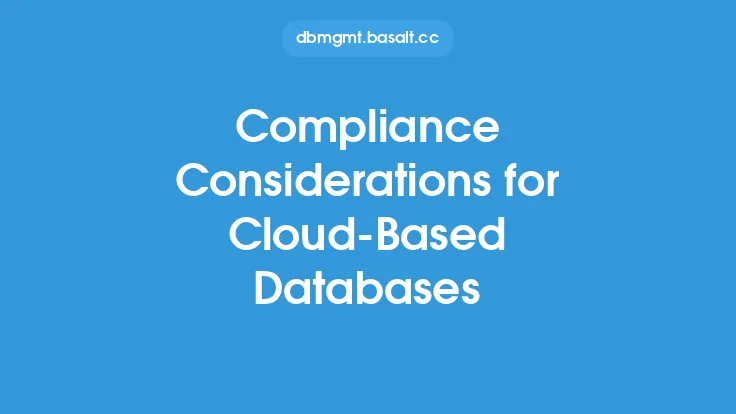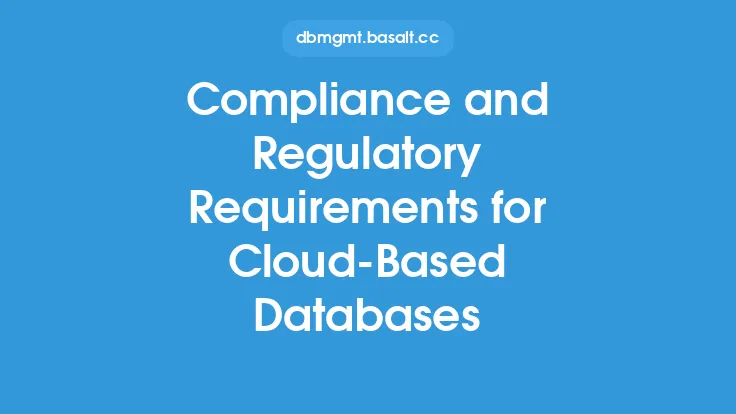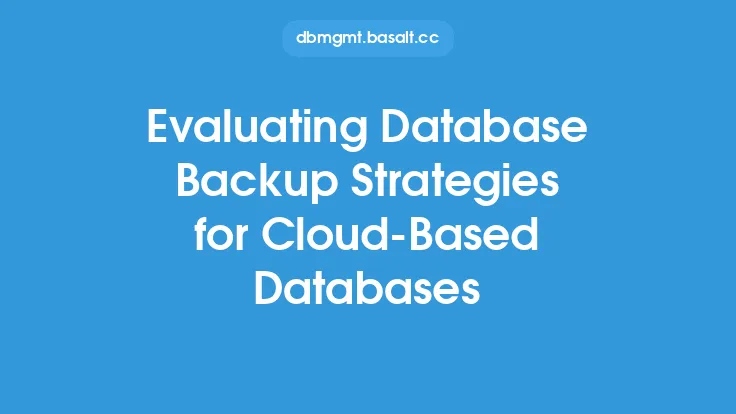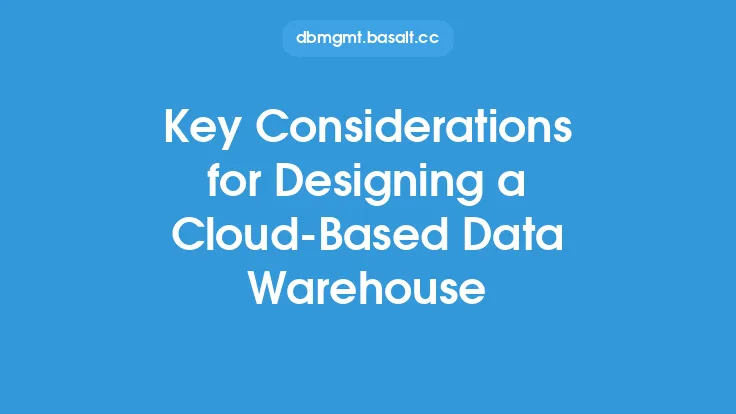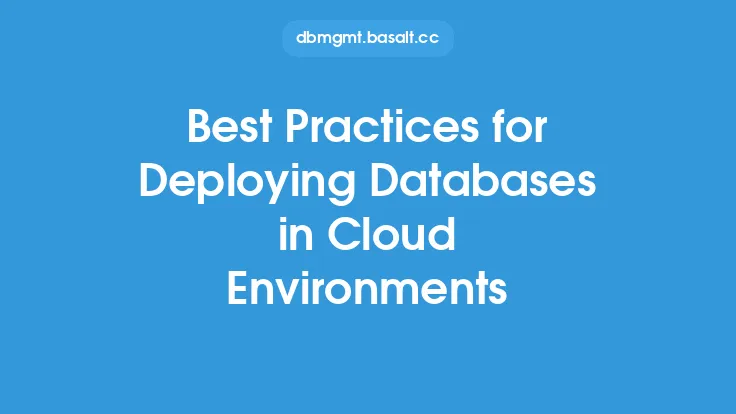As the world becomes increasingly digital, the importance of securing cloud-based databases cannot be overstated. Cloud-based databases offer a range of benefits, including scalability, flexibility, and cost-effectiveness, but they also introduce new security risks that must be addressed. Network security for cloud-based databases is a critical component of overall database security, and it requires a comprehensive approach that takes into account the unique characteristics of cloud-based environments.
Introduction to Cloud-Based Database Security
Cloud-based databases are vulnerable to a range of security threats, including unauthorized access, data breaches, and denial-of-service attacks. To protect against these threats, it is essential to implement robust network security measures that can detect and prevent malicious activity. This includes using encryption, firewalls, and access controls to restrict access to the database and its data. Additionally, cloud-based databases require ongoing monitoring and maintenance to ensure that security measures are up-to-date and effective.
Cloud-Based Database Network Architecture
Cloud-based databases typically operate in a multi-tenant environment, where multiple databases are hosted on the same physical infrastructure. This can introduce security risks, as a vulnerability in one database can potentially affect others. To mitigate this risk, cloud providers use a range of techniques, including virtualization, containerization, and network segmentation, to isolate databases and restrict access to authorized users. Understanding the network architecture of a cloud-based database is critical to implementing effective security measures.
Security Measures for Cloud-Based Databases
There are several security measures that can be implemented to protect cloud-based databases. These include:
- Encryption: Encrypting data in transit and at rest can help to protect against unauthorized access and data breaches.
- Access controls: Implementing strict access controls, including multi-factor authentication and role-based access control, can help to restrict access to authorized users.
- Firewalls: Configuring firewalls to restrict incoming and outgoing traffic can help to prevent malicious activity.
- Intrusion detection and prevention systems: Implementing intrusion detection and prevention systems can help to detect and prevent malicious activity in real-time.
- Regular updates and patches: Regularly updating and patching database software and underlying infrastructure can help to prevent vulnerabilities and exploits.
Cloud Provider Security Responsibilities
Cloud providers have a critical role to play in securing cloud-based databases. This includes:
- Providing secure infrastructure: Cloud providers must ensure that the underlying infrastructure is secure and up-to-date.
- Implementing security controls: Cloud providers must implement security controls, including firewalls, access controls, and encryption, to protect databases and their data.
- Monitoring and maintenance: Cloud providers must continuously monitor and maintain the security of cloud-based databases, including updating and patching software and infrastructure.
- Compliance: Cloud providers must comply with relevant regulations and standards, including data protection and privacy laws.
Customer Security Responsibilities
While cloud providers have a critical role to play in securing cloud-based databases, customers also have responsibilities. These include:
- Configuring security controls: Customers must configure security controls, including access controls and firewalls, to restrict access to authorized users.
- Implementing encryption: Customers must implement encryption to protect data in transit and at rest.
- Monitoring and maintenance: Customers must continuously monitor and maintain the security of their cloud-based databases, including updating and patching software and infrastructure.
- Compliance: Customers must comply with relevant regulations and standards, including data protection and privacy laws.
Best Practices for Securing Cloud-Based Databases
There are several best practices that can be followed to secure cloud-based databases. These include:
- Implementing a defense-in-depth approach: Implementing multiple layers of security controls can help to prevent malicious activity.
- Conducting regular security assessments: Conducting regular security assessments can help to identify vulnerabilities and weaknesses.
- Implementing incident response plans: Implementing incident response plans can help to respond quickly and effectively in the event of a security incident.
- Providing security training: Providing security training to users and administrators can help to prevent security incidents.
Conclusion
Network security for cloud-based databases is a critical component of overall database security. By understanding the unique characteristics of cloud-based environments and implementing robust security measures, including encryption, firewalls, and access controls, organizations can help to protect their cloud-based databases from security threats. Cloud providers and customers both have critical roles to play in securing cloud-based databases, and by following best practices and working together, organizations can help to ensure the security and integrity of their cloud-based databases.
